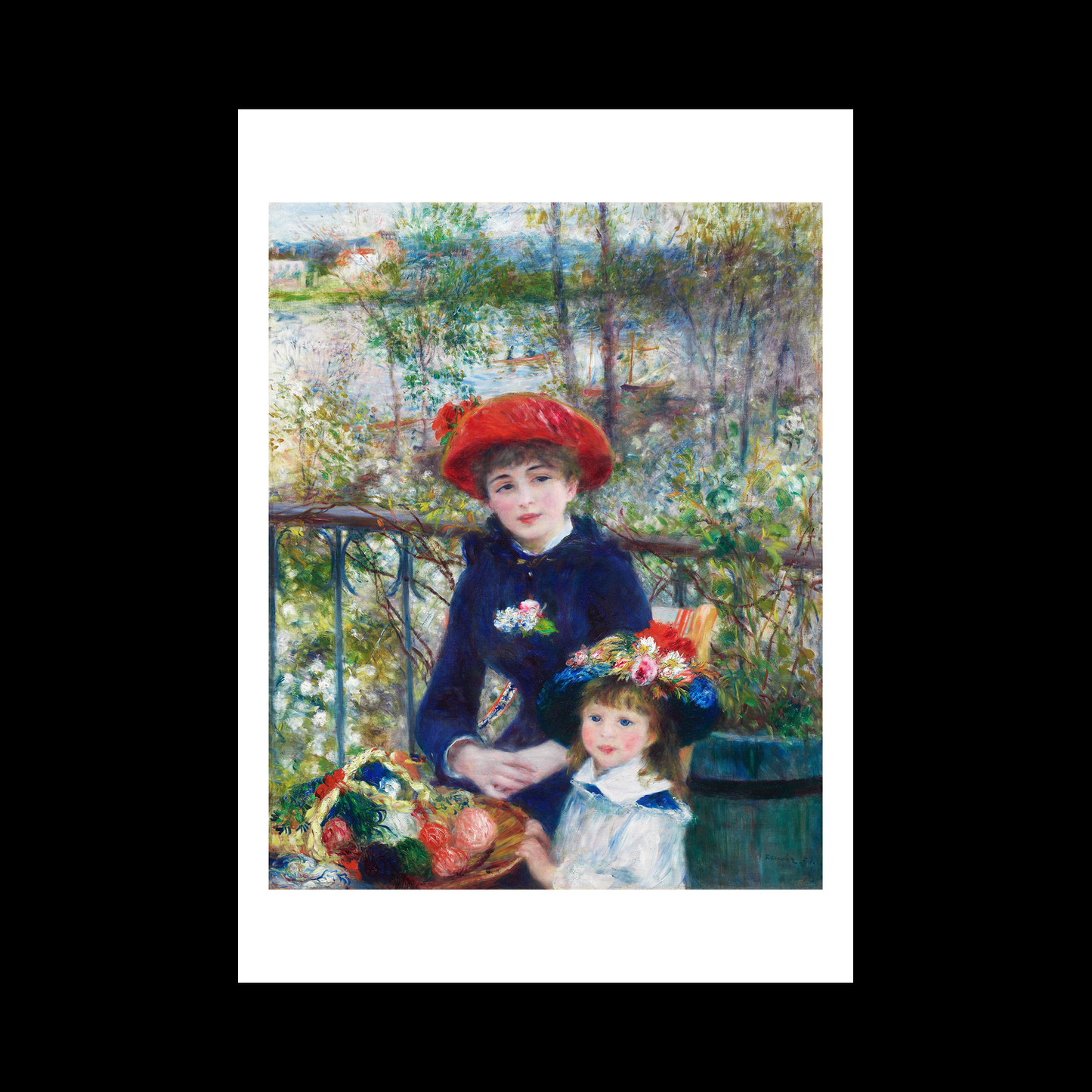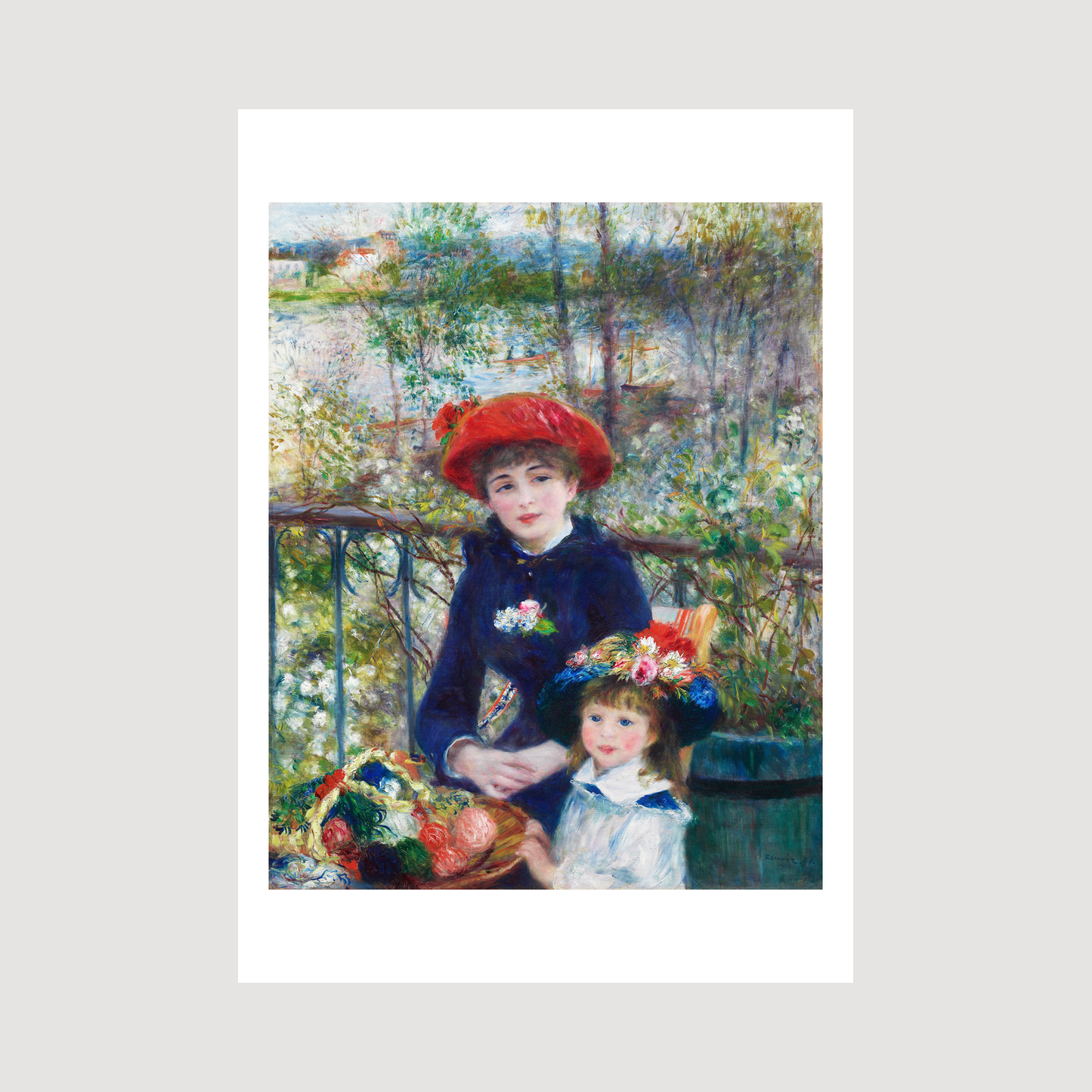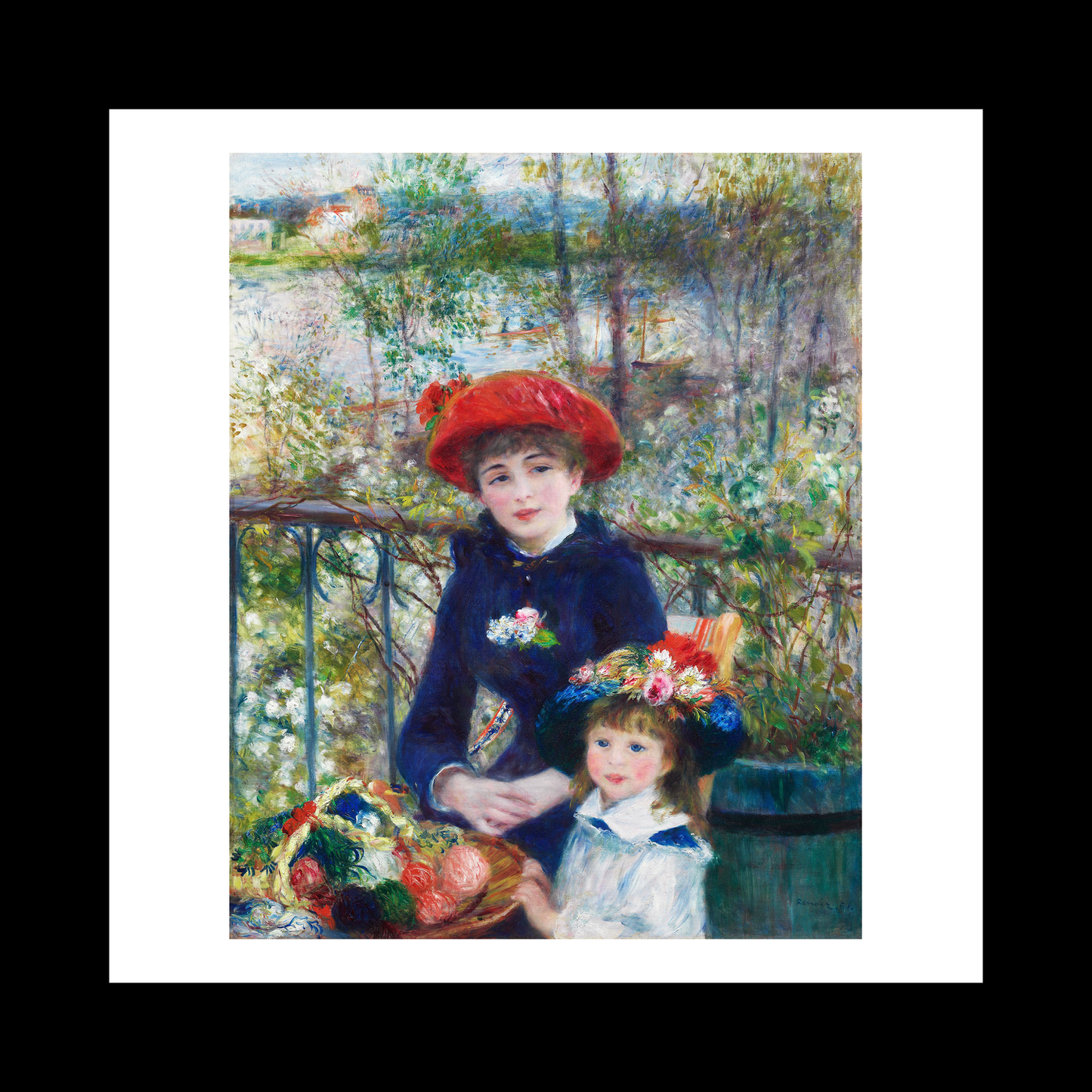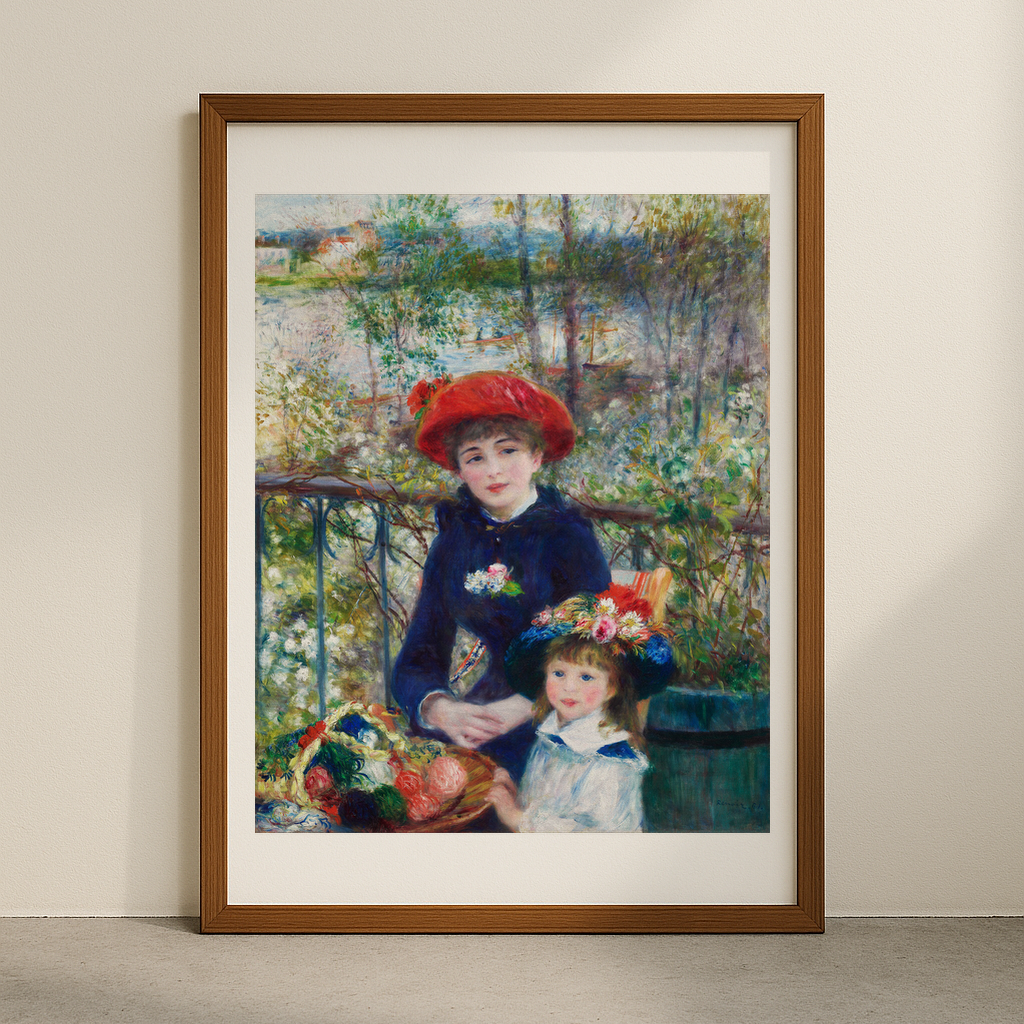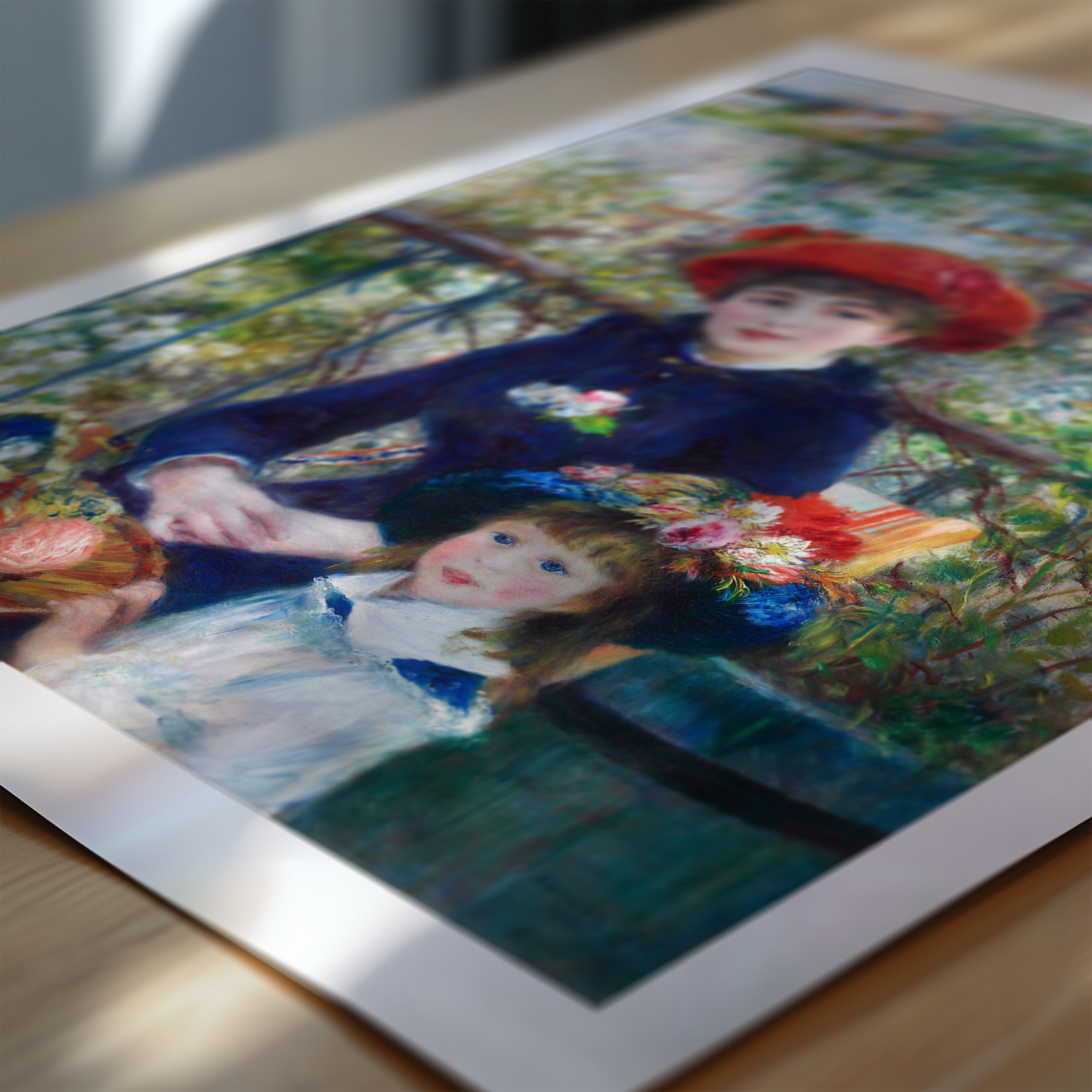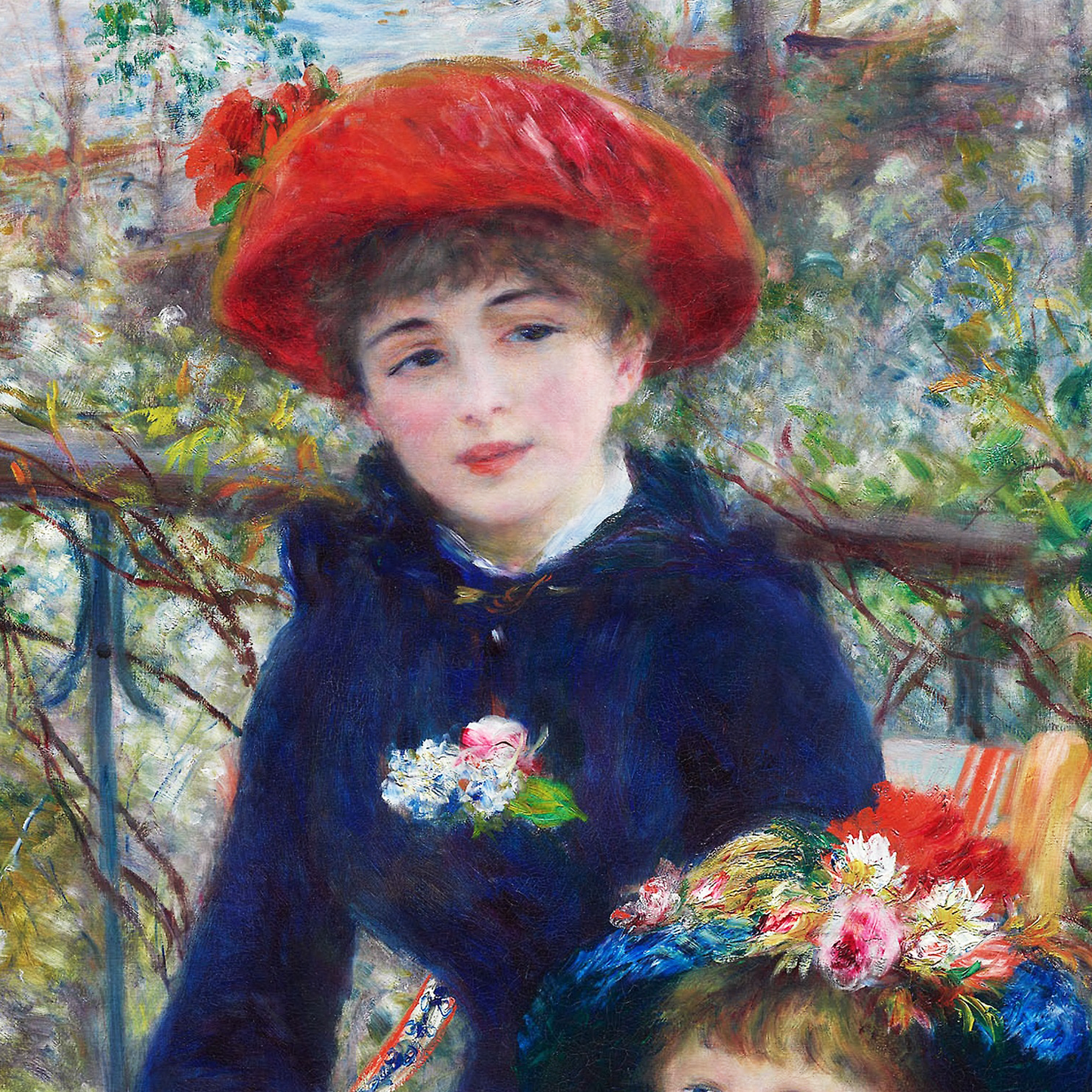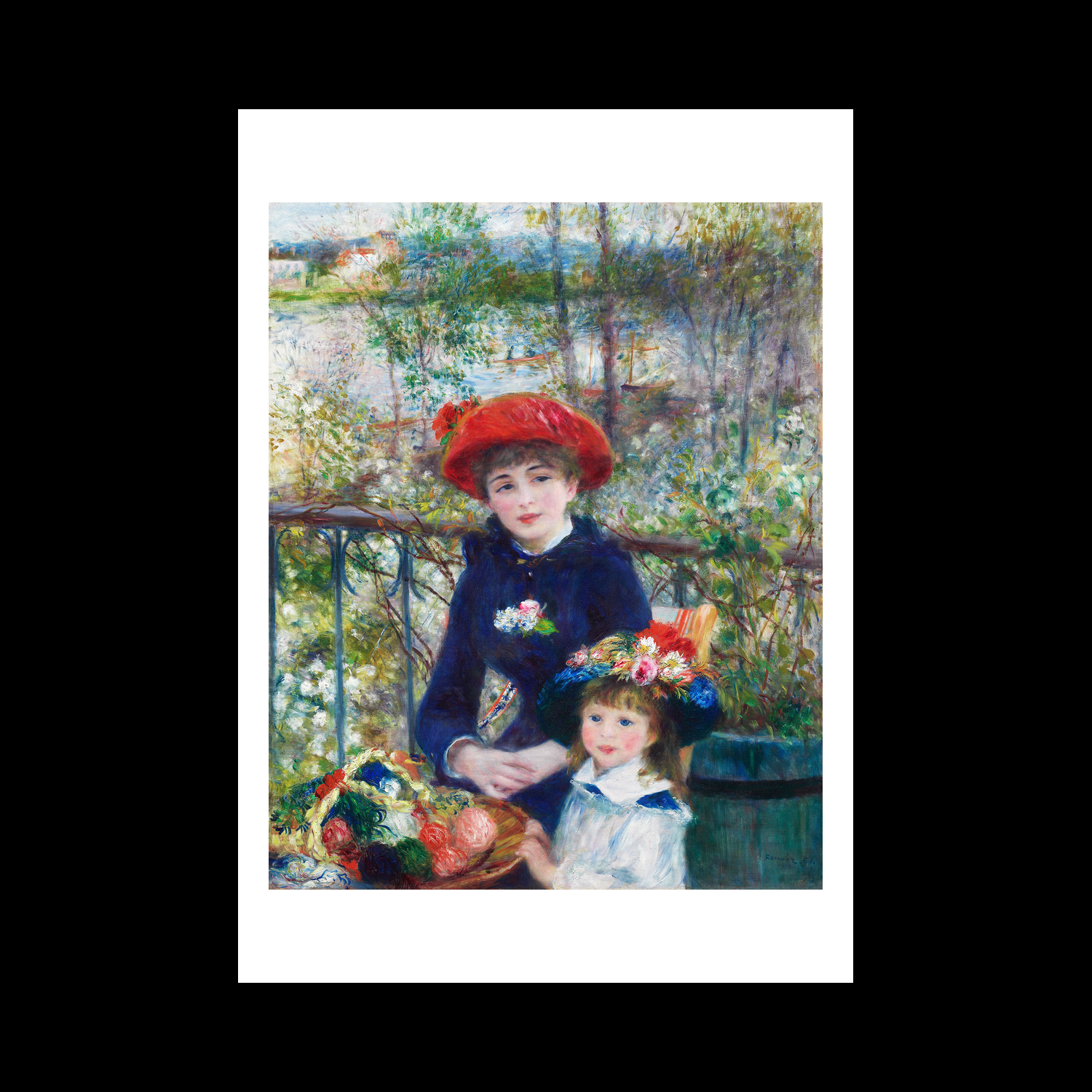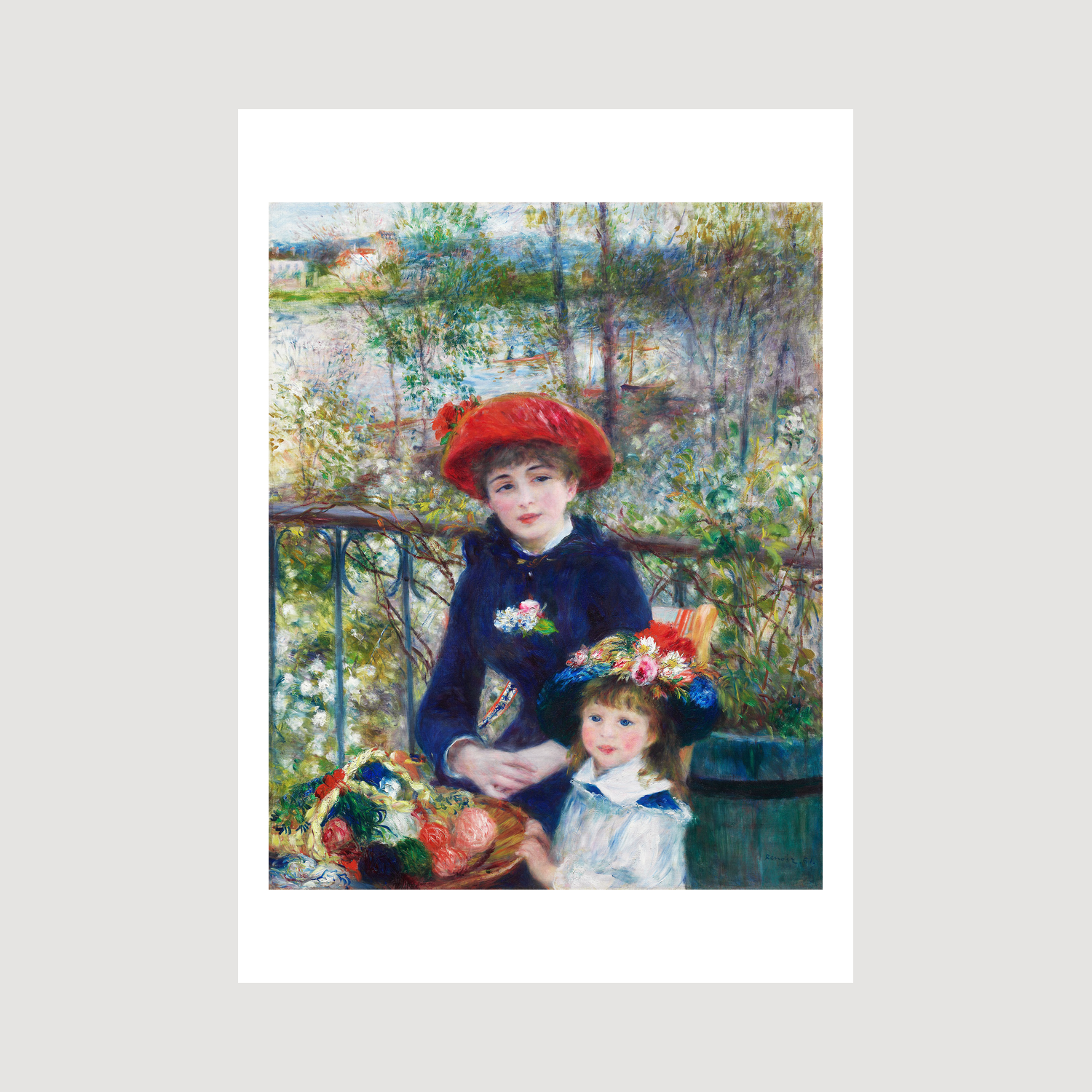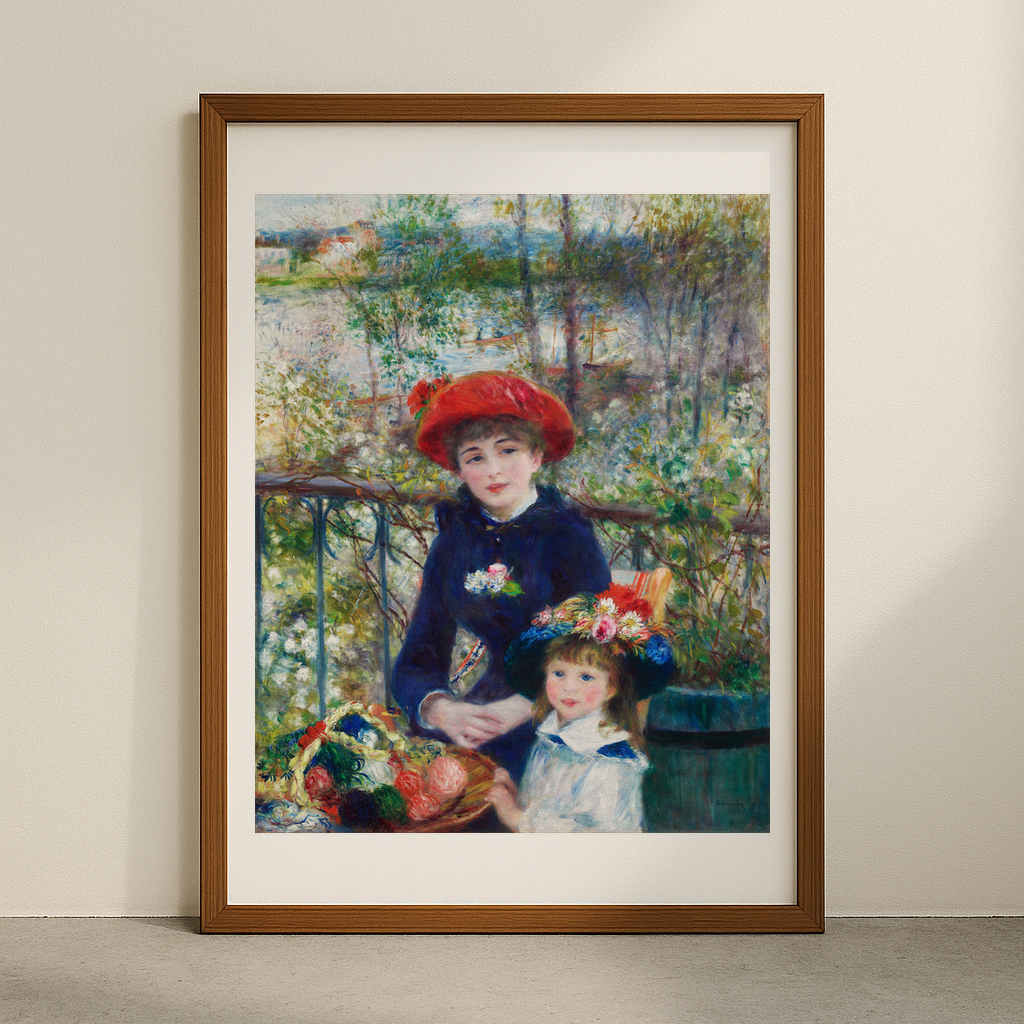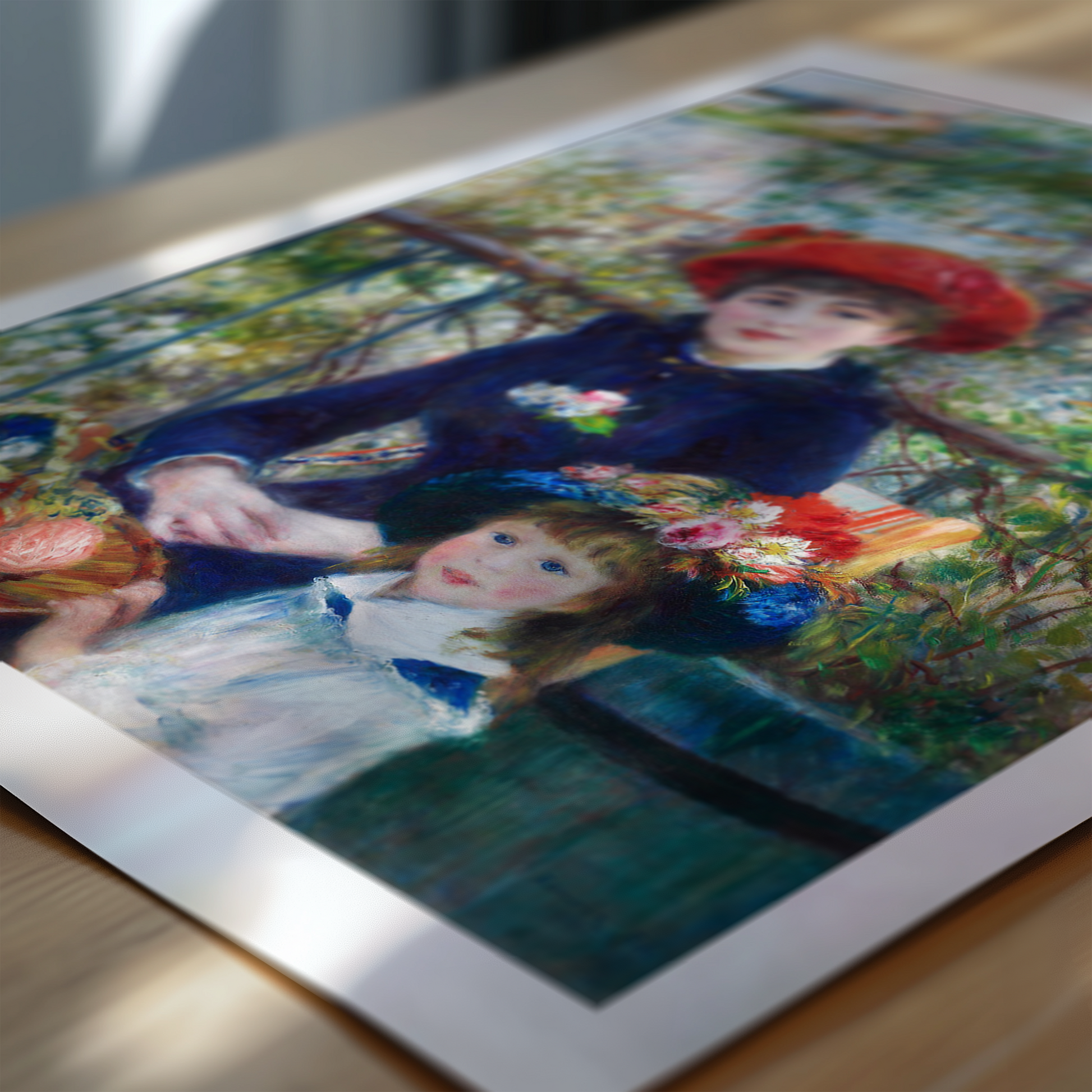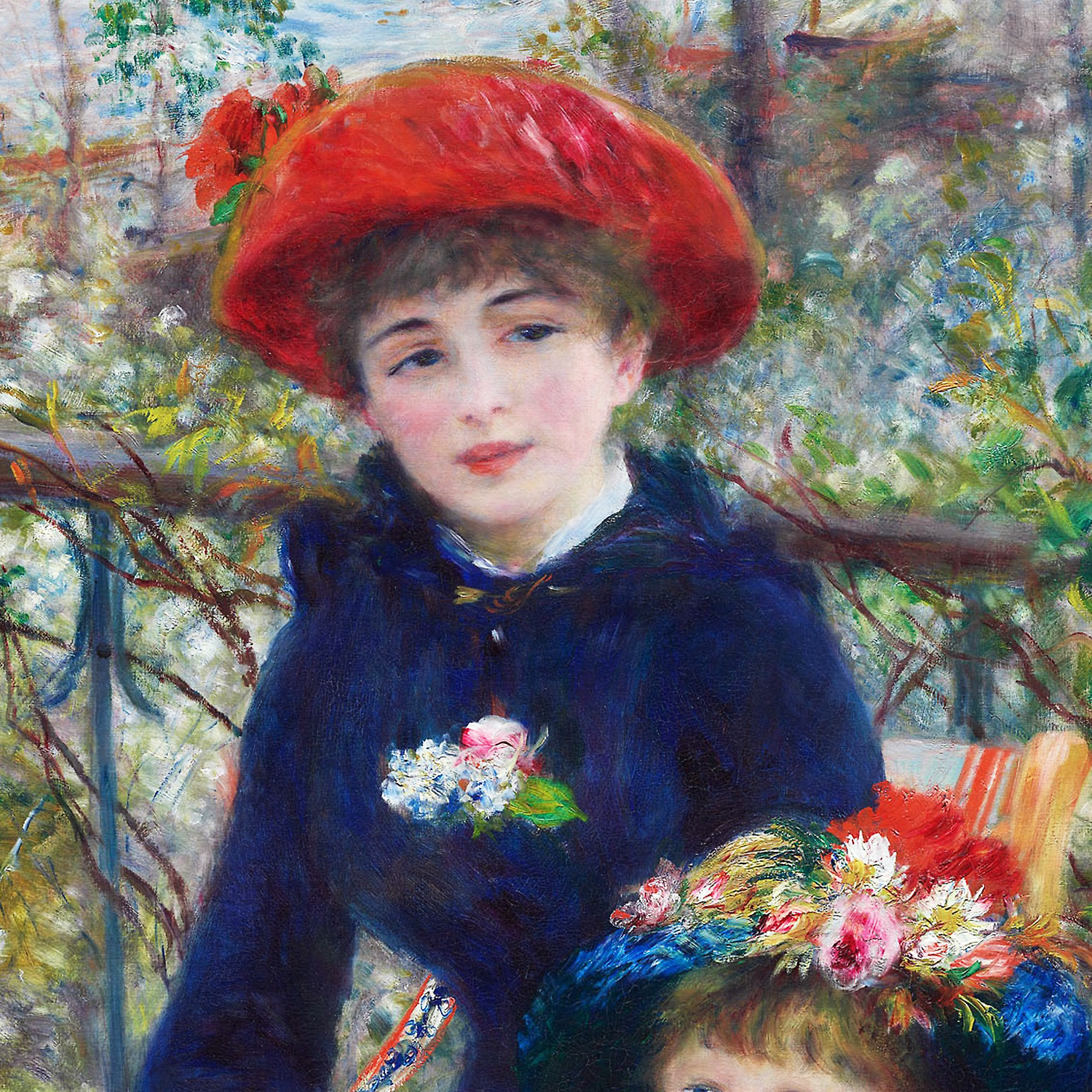1
/
of
6
Two Sisters (On Terrace) (1881)
Two Sisters (On Terrace) (1881)
Regular price
£12.45 GBP
Regular price
Sale price
£12.45 GBP
Taxes included.
Quantity
Couldn't load pickup availability
"Two Sisters (On the Terrace)" (1881) by Pierre-Auguste Renoir captures a tender moment between two young women in a sun-drenched Parisian setting. The larger figure, though often referred to as a sister, was actually Renoir's model Jeanne Darlot, while the younger girl remains unidentified. The painting exemplifies Renoir's mastery of Impressionist techniques, with its vibrant colours, dappled light effects, and the characteristic loose brushwork that defines the movement.
The composition showcases Renoir's exceptional ability to render fabric and light. The elder sister's flowered hat and striped bodice demonstrate his skill in depicting intricate patterns, while the younger girl's bright red bow adds a striking focal point. The background, though seemingly simple, reveals a complex layering of greens and blues, suggesting a lush garden terrace overlooking Paris, creating depth through subtle colour variations rather than rigid perspective.
This work emerged during a pivotal period in Renoir's career when he was transitioning from his earlier, more spontaneous Impressionist style to a more structured approach. The painting reflects his growing interest in traditional portraiture while maintaining the luminous quality that characterises his best work. Created during the height of the Impressionist movement, it represents the optimistic spirit of the Parisian middle class during the Belle Époque, when leisure and fashion were celebrated aspects of daily life. The natural poses and informal setting create an intimacy that draws viewers into this captured moment of 19th-century Parisian life.
View full details
The composition showcases Renoir's exceptional ability to render fabric and light. The elder sister's flowered hat and striped bodice demonstrate his skill in depicting intricate patterns, while the younger girl's bright red bow adds a striking focal point. The background, though seemingly simple, reveals a complex layering of greens and blues, suggesting a lush garden terrace overlooking Paris, creating depth through subtle colour variations rather than rigid perspective.
This work emerged during a pivotal period in Renoir's career when he was transitioning from his earlier, more spontaneous Impressionist style to a more structured approach. The painting reflects his growing interest in traditional portraiture while maintaining the luminous quality that characterises his best work. Created during the height of the Impressionist movement, it represents the optimistic spirit of the Parisian middle class during the Belle Époque, when leisure and fashion were celebrated aspects of daily life. The natural poses and informal setting create an intimacy that draws viewers into this captured moment of 19th-century Parisian life.
